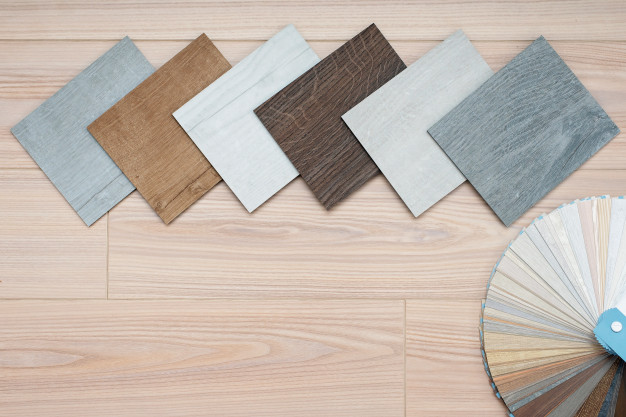Everythings About Vinyl Flooring
Vinyl is a type of resilient flooring, a flexible material that feels a bit softer underfoot than rigid wood or tile. It’s made from a layer of PVC (short for polyvinyl chloride) plastic over a layer of felt. Cushioned vinyl has a thin layer of foam as well, making it more comfortable to walk on. Thicker vinyl flooring can have a textured surface to make it look like wood or stone.
Types
Vinyl flooring comes in several forms. Sheet vinyl is a large sheet of flooring that you unroll, cut to size, and glue to your subfloor. You can also buy click-style vinyl planks, similar to engineered wood or vinyl tiles, that you glue in place one at a time. Some vinyl tiles come with a peel-and-stick backing, so you don’t need to add any adhesive before laying them down.
Advantages
Vinyl is a tough material that stands up to both moisture and heavy traffic. It’s comfortable to walk on and warmer on bare feet than tile. It’s also inexpensive and durable; a good-quality vinyl floor can last 20 years.
Like tile, vinyl comes in a wide range of colors and patterns. It can convincingly simulate the look of almost any other material. A flooring dealer interviewed by Consumer Reports says customers often assume the luxury vinyl planks on her showroom floor are real wood.
Plank vinyl and peel-and-stick tiles are easy to install, though sheet vinyl can be difficult. You can install vinyl over an existing vinyl floor as long as it only has one layer. Plank vinyl is also easy to repair – just remove and replace a damaged plank – and all types of vinyl flooring are very easy to clean.
Disadvantages
Vinyl flooring varies in quality. You’ll have less choice of color and pattern with cheaper types, and they often have a fake look. Although vinyl is more durable than it used to be, Consumer Reports still found it’s more likely to scratch than any other type of flooring. Also, if you install it directly over a subfloor with no underlayer, it can have a hollow, echoey sound when you walk on it.
One of the biggest complaints about vinyl is that it’s not eco-friendly. According to the State of New Jersey Department of Human Services, PVC is “a major source of phthalates,” plastic softeners that have been banned in toys because they harm children’s health and development. When Consumer Reports tested vinyl flooring for phthalates, it found only low levels in the air and on the floor surface, but it still warned that parents of toddlers should use caution with this material.
Best Uses
Vinyl is appropriate for kitchens, baths, and other wet rooms. It’s also suitable for rooms that get a lot of traffic, such as mudrooms. Consumer Reports recommends it as the best choice for a basement since it can tolerate moisture and doesn’t feel as cold as tile.
Cost
Vinyl is an inexpensive flooring, costing $1 to $5 per square foot. Consumer Reports says the average cost for the vinyl planks and tiles it tested was $3.41 per square foot. Installation adds another $1 to $2 per foot, according to Moneycrashers.
Refer to : U.S Flooring


1 thought on “What places are suitable for vinyl flooring?”